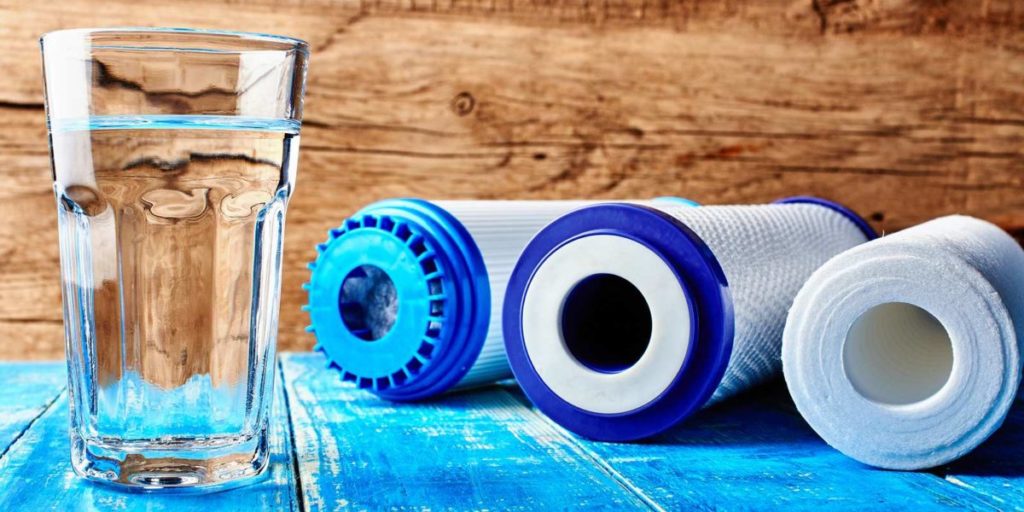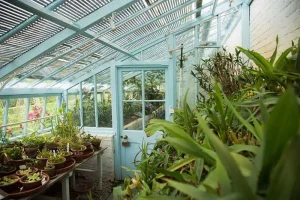Living off the grid can be a rewarding and self-sufficient lifestyle, but it also presents unique challenges when it comes to accessing safe drinking water.
Traditional municipal water supply systems may not be available in rural areas or during natural disasters, leaving individuals reliant on alternative methods for purifying their water.
However, with the right knowledge and tools, off-grid water purification can provide a reliable source of clean drinking water.
We’ll explore effective and accessible methods for purifying water without relying on public utilities, so you can enjoy safe and healthy drinking water no matter where you are.
Boiling
Boiling water is the most effective method for killing bacteria, viruses, and other microorganisms that can make you sick. Bring water to a rolling boil for one to three minutes to kill any harmful pathogens.
When you bring water to a rolling boil, the heat from the water kills any harmful pathogens that may be present.
This method is particularly effective because it targets the microorganisms at their most vulnerable point – their inability to survive in high temperatures.
In fact, research has shown that boiling water for just one to three minutes is enough to kill most bacteria, viruses, and other pathogens that can cause illness.
This makes boiling water a simple and effective way to ensure that your drinking water is safe and free from harmful contaminants.
By bringing water to a rolling boil for one to three minutes, you can rest assured that you are taking a important step towards maintaining your health and well-being.
Water Filters
Portable water filters are a convenient and effective way to purify water on the go. Look for filters that use activated carbon or ceramic elements to remove impurities and improve the taste and odor of your drinking water.
If you’re looking for a convenient and effective way to purify water on the go, consider investing in a portable water filter.
These lightweight and compact filters use activated carbon or ceramic elements to remove impurities and improve the taste and odor of your drinking water.
Unlike bulky and inconvenient water purification systems, portable water filters are easy to transport and can be used in a variety of settings, from camping trips to urban adventures.
When selecting a portable water filter, look for one that uses activated carbon or ceramic elements, as these materials are highly effective at removing impurities and improving water quality.
Consider the filter’s flow rate and capacity, as well as its maintenance requirements and lifespan.
With proper care and maintenance, a portable water filter can provide you with safe and delicious drinking water no matter where your adventures take you.
Solar Disinfection (SODIS)
Exposing water to sunlight in a clear plastic bottle can kill harmful pathogens. The UV rays from the sun will penetrate the water, providing a natural disinfection method.
Solar Disinfection, or SODIS, is a simple and effective method for disinfecting water using nothing but the power of the sun.
This method involves placing contaminated water in a clear plastic bottle and exposing it to sunlight for at least six hours.
The UV rays from the sun penetrate the water, killing harmful pathogens such as bacteria, viruses, and fungi.
This process is enhanced by the heat generated by the sun, which helps to accelerate the disinfection process.
The result is safe, clean drinking water that is free from harmful pathogens.
This method is particularly useful in developing countries where access to clean water is limited, as it does not require any specialized equipment or infrastructure.
In fact, the only requirement is clear plastic bottles and sunlight, making it a highly sustainable and cost-effective solution for communities around the world.
Distillation
Distillation involves boiling water and then collecting the condensed steam, which is free from many contaminants. This method is effective but requires a distillation apparatus or a solar still.
Distillation is a highly effective method for purifying water, and it involves boiling the water to separate it from impurities.
The boiling process causes the water to vaporize and leave behind many contaminants, such as salts, minerals, and bacteria.
The condensed steam, which is free from many contaminants, can then be collected and used for a variety of purposes, such as drinking, cooking, or irrigation.
To perform distillation, you will need a distillation apparatus, such as a distillation flask or a solar still.
A solar still is a simple and cost-effective option that uses the heat of the sun to vaporize the water.
Alternatively, you can use a distillation flask and a heat source, such as a stove or a candle, to boil the water.
It’s important to note that distillation is not a foolproof method for purifying water.
Some contaminants, such as volatile organic compounds (VOCs) and certain types of bacteria, may not be removed during the distillation process.
Distillation requires a significant amount of energy and can be time-consuming.
However, if you have access to a reliable source of heat and a distillation apparatus, distillation can be a highly effective method for purifying water in a survival situation.
Iodine or Chlorine Treatment
Adding iodine or chlorine tablets to your water can kill bacteria and viruses. Follow the manufacturer’s instructions for proper dosing.
Adding iodine or chlorine tablets to your water can be an effective method for killing bacteria and viruses.
The iodine or chlorine disinfects the water by damaging the cell membranes of microorganisms, ultimately leading to their death.
This makes the water safe to drink.
It is essential to follow the manufacturer’s instructions for proper dosing, as overdosing can be harmful.
For example, iodine tablets usually require a dosage of 8-10 tablets per gallon of water, while chlorine tablets may require a dosage of 5-10 tablets per gallon.
The disinfected water should be stored in clean containers and consumed within 24-48 hours to maintain its safety.
When choosing between iodine and chlorine tablets, consider the level of contaminants in the water, as iodine may be more effective against certain types of bacteria and viruses.
Proper use of iodine or chlorine treatment can greatly improve the safety and quality of drinking water in emergency situations.
Ceramic Water Purifiers
Ceramic water purifiers use a unique filter that kills bacteria, viruses, and other impurities. These purifiers are a good option for those who want a portable, easy-to-use water purification system.
Looking for a convenient and effective way to purify your drinking water?
Consider a ceramic water purifier!
These state-of-the-art systems use a proprietary filter technology that eradicates a wide range of contaminants, including bacteria, viruses, and other impurities.
Unlike traditional water filters that rely on activated carbon or sediment filtration, ceramic water purifiers use a unique ceramic element that acts as a barrier against harmful substances.
With a ceramic water purifier, you can rest assured that your drinking water is safe and free of any potential health hazards.
Whether you’re camping, traveling, or simply want a reliable source of clean drinking water at home, this system is an excellent choice.
It’s easy to use, lightweight, and comes with a compact design that makes it easy to transport.
Plus, with proper maintenance, the ceramic filter can last for up to 1,000 gallons of water, making it a cost-effective solution in the long run.
In short, if you’re looking for a reliable and easy-to-use water purification system, consider investing in a ceramic water purifier.
It’s a smart and healthy choice for anyone who wants to enjoy clean and safe drinking water, no matter where they are.
UV Purification
Ultraviolet light can also be used to purify water. UV purifiers kill bacteria and viruses by damaging their DNA, making them unable to replicate and cause illness.
UV purification is a powerful and effective method for purifying water.
By using ultraviolet light, UV purifiers can kill bacteria and viruses that are present in the water.
This is achieved by damaging the DNA of these microorganisms, which makes them unable to replicate and cause illness.
The UV light disrupts the DNA structure of the bacteria and viruses, rendering them harmless.
This means that the water is safe to drink and use for various purposes.
UV purification is a chemical-free process, which makes it a more environmentally friendly option compared to other water purification methods.
Overall, UV purification is a reliable and effective way to purify water, making it a great option for those looking for a safe and sustainable solution.
Sand Filters
Sand filters are a simple and effective method for purifying water. These filters use a combination of sand and gravel to remove impurities and improve the taste and odor of your drinking water.
Sand filters are a reliable and efficient technique for purifying water, and they are widely used in both residential and commercial settings.
These filters are designed to remove impurities from your drinking water, including dirt, sediment, and bacteria, by using a combination of sand and gravel.
To start, the water to be filtered is passed through a coarse layer of sand, which traps larger particles and debris.
Then, the water passes through a medium layer of sand, which removes smaller particles and impurities.
The water is filtered through a layer of finer sand, which polishes the water and improves its taste and odor.
The sand and gravel used in these filters are carefully selected to ensure optimal purification results.
The sand is typically composed of anthracite, a high-quality, coal-based material that is highly effective at removing impurities.
The gravel, on the other hand, is made up of small, rounded rocks that help to filter out any remaining particles.
One of the main advantages of sand filters is their simplicity and ease of maintenance.
They require little attention and can be easily cleaned and maintained by simply backwashing the filters with water.
Sand filters are relatively inexpensive and can be installed both indoors and outdoors, making them a great option for a variety of different applications.
Overall, sand filters are a highly effective method for purifying water, and they can be a valuable addition to any home or business.
By using a combination of sand and gravel, these filters are able to remove a wide range of impurities, resulting in cleaner, fresher tasting water.
Whether you’re looking to improve the quality of your drinking water or simply want to remove impurities from your water supply, a sand filter is a great option to consider.
Want More? Dive Deeper Here!
Hey there! If you’re the type who loves going down the rabbit hole of information (like we do), you’re in the right spot. We’ve pulled together some cool reads and resources that dive a bit deeper into the stuff we chat about on our site. Whether you’re just killing time or super into the topic, these picks might just be what you’re looking for. Happy reading!
- Water filter uses sunlight to remove lead and other contaminants- Princeton Engineering
- AquaPulse: Portable Off-the-Grid Water Purification
- From seawater to drinking water, with the push of a button | MIT News | Massachusetts Institute of Technology
- (PDF) Adaptable Wind-Powered Filtration System For Rural Water Treatment
- New microfluidic water purification system under development by UMaine, Harvard researchers – UMaine News – University of Maine






